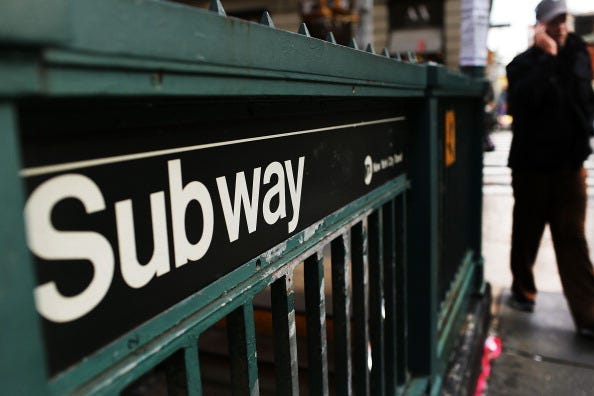
NEW YORK (1010 WINS) -- You probably don't need a state-released study to tell you the following if you're a regular straphanger: A whopping 65 percent of subway platforms are either worn or damaged, according to a report based on MTA inspection data released Friday by state comptroller Tom DiNapoli.
And things have gotten worse in recent years: In 2017, 29 percent of platforms were worn or damaged. In 2012, the figure was 27 percent.
"Years of underfunding for the MTA capital program has translated into a longer list of needed repairs in New York City’s subway stations, fewer stations in good condition, and ever-increasing rider aggravation,” DiNapoli said.
He added, "The rising number of potentially hazardous worn or damaged platform edges is particularly troubling. On the plus side, the MTA has been able to reduce the number of the most serious station defects, but a lot more needs to be done to address declining station conditions.
He also put the burden of responsibility, in part, on the MTA: "It is up to the MTA to prioritize its limited resources to ensure its next capital program improves service and conditions for riders," he said.
A significant concern is the deterioration in platform edges, which are important to rider safety. A decade ago, the MTA made a concerted effort to fix crumbling platform edges after several passengers fell onto the tracks, but the share of edges in need of repair has grown.
Other findings from the study:
-- One-third of all stations (158) had serious structural deficiencies (those rated 4.0 or higher) in 2017, down from 188 in 2012. Transit reduced the total number of serious structural deficiencies at all stations by 25 percent between 2012 and 2017 to 474 structural components. The overall number of serious architectural defects was reduced by 89 percent. Despite these efforts, the total number of structural defects (rated 3.0 and above) increased by 8 percent, to 4,491. In addition, only 26 of the 471 stations surveyed (5.5 percent) had all of their structural and architectural components in good repair, half as many as in 2012.
--Among the four boroughs served by the subway system, only Brooklyn had a decline in the share of structural components in disrepair since 2012, from 32 percent to 26 percent. Still, the structural components at only 11 of its 170 stations were in good repair, compared with 29 in 2012. More than two-thirds of the structural components at Brooklyn’s Borough Hall 2/3 station were worn or damaged.
--Stations in Queens had the largest share of worn or damaged structural components in 2017 (44 percent), followed by the Bronx (34 percent). At Queens’ most heavily used station (Main Street station on the No. 7 line) 45 percent of the structural components were worn or damaged. Not one of the Bronx’s 70 stations had all of their structural components in good repair, compared to 12 in 2012.
--Manhattan had the lowest share of structural components in disrepair (24 percent), but only 8 (including 4 that recently opened) of the 150 stations in Manhattan had all of their structural components in good condition, compared with 15 in 2012. The report found that 78 percent of the structural components at the Times Square shuttle station were in need of repair.
MTA spokesman Tim Minton said in a statement,
“As the comptroller notes in his report, NYC Transit has made significant strides at station repairs systemwide thanks to a station maintenance program that focuses on addressing individual components with serious defects. This is in lieu of performing major structural work throughout a station – work that often requires closures or bypasses that inconveniences customers."
The statement continues, "The comptroller’s conclusion about the number of stations in fully repaired condition is flawed in that many more stations contain only minor issues, affecting neither safety nor the customer experience. Those stations are understandably not prioritized for immediate repair. By focusing on high-priority defects separately, we are able to respond to serious issues quickly making the most of our limited resources efficiently and cost-effectively. The Fast Forward Plan to modernize NYC Transit, the comprehensive MTA reorganization to focus resources on customer-facing improvements, and the historic passage of central business district tolling will all help to maintain and enhance stations throughout the system."
